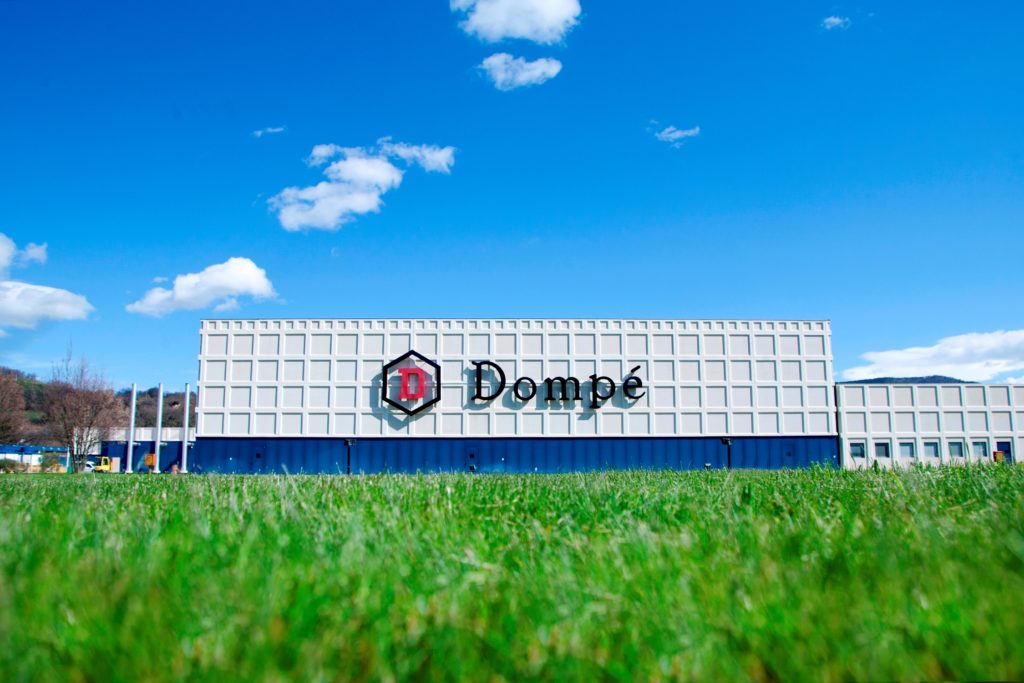One of the leading biopharmaceutical companies in Italy, the plant in L'Aquila producing primary care drugs, eight managers from different departments (engineering, manufacturing, supply chain, biotechnology) and one goal: to independently initiate a continuous improvement process. Founded in 1940 and focused on developing innovative therapeutic solutions for rare diseases, Dompé needed to increase the skills of its managers in order to create a virtuous circle within all business processes that would sustain and increase productivity and efficiency.

"We were contacted by Anna Palma Ruscigno, Production Director of Dompè, to start a training course, and given their needs, the choice fell on the Master Lean Six Sigma from our Lean Factory School®. which aims to combine the Lean vision to make production/decision-making processes more efficient and flexible and reduce waste, with the Six Sigma management approach aimed at improving process reliability by reducing variability and costs and increasing process yields. The Master's program, Lean Green Belt and Lean Black Belt pathway, is developed over six months during which each participant, supported by a tutor, identifies the project he or she will develop using both Lean and Six Sigma tools. The theoretical part is then complemented by practical training on an automatic cartoning machine on which you directly experience the principles learned. The course concludes with a multiple choice test and the presentation of the developed project and the final achievement of certification."
A PROJECT IN CONCRETE: THE SOLIDS DEPARTMENT'S FLUID BED GRANULATOR Project goal: to increase production volumes. KPI (Key Perfor-mance Indicator) used: the extra kilos to be produced per month. "As a first step, we analyzed the process in every step," explains Emanuela Nardecchia, Solid PPU manager at Dompé, "to understand how to optimize the production of the semi-finished product, proceeding by steps: define, to identify problems and needs and thus define the ring, mode of action and implementation time (about 20 weeks); analysis, with the support of management control, project goal; quantization of expected savings which were, initially, about 20% increase in productivity on an annual basis. This was followed by process mapping of an entire semi-finished product preparation campaign during which we classified the various activities whose times we subsequently took and from the analysis of the resulting data we obtained a Pareto diagram of the various activities: the predominant ones, the value-added ones, and the so-called non-value-added ones. The work focused particularly on the latter, because it is true that we could not eliminate them, we have constraints in the pharma for compliance with GMP and safety regulations, but we had a very good margin to intervene and optimize them, where possible, making them impact less on the process. But the real goal was scored when we focused on value-added activities, that is, those that are productive, identifying a piece of equipment that constituted a bottlenecke that in the course of activities was stationary for the 43% of time."
WHAT WERE THE ACTIVITIES THAT FORCED THIS EQUIPMENT INTO INACTIVITY? "A few were identified, particularly the preparation of two binding solutions and the sieving activity at two different stages of the process. Through the implementation of Ishikawa diagrams, causes were identified and solutions were identified from which emerged three work hypotheses whose organizational and technical impacts, along with the use of additional equipment, were different as were the gains in terms of increased activities and productivity. The first hypothesis contemplated only organizational changes, with a projected time reduction of 6% and a gain of 53 kilograms per month, equivalent to an annual economic return on this product of 11%. The second assumed organizational changes and the use of additional machinery: the time reduction thus reached 17% and the productivity gain was 147 kilograms/month with an economic return of 30%. In the third hypothesis was expected to use both additional personnel and materials (and consequently cost more resources) to achieve a reduction in time of 25%, an increase in the monthly semi-finished product produced of 224 kilograms, and a gain, as the economic return of the analyzed product on sales, of 48%. In front of these data it would seem simple to decide," Nardecchia continues, "but numbers are not the only significant indicator in Six Sigma. Therefore, only after a shared analysis with management during which we evaluated each element, did we choose the third option.
As we entered the field improvement phase, the results were very good: relative to the preparation of the two binder solutions, in the former the reduction in critical equipment downtime was 49%, while in the latter it was 56%; for sieving, on the other hand, for one step the reduction in downtime was 90% and for the second activity it was completely eliminated. In summary, there was an increase in productivity of 224 kilograms/month, a reduction of 25% on the process time of producing the semi-finished product, a saving on the annual sales of the analyzed product of 48%, a reduction in the production cost on the product of 15%, and an increase on the average profit margin on the piece sold between 7 and 8%."
Throughout the process- concludes Anna Palma Ruscigno - thanks to the expertise and empathy of Bonfiglioli Consulting's partners, there was an air of great involvement, both of the eight people directly involved in the project and of all the practitioners who were called upon to collaborate.
The initial idea was just that, to create a team that could positively 'contaminate' the entire company with this new approach, which also requires a major shift in mindset. Today, this innovative way of operating has become the bread and butter of my staff who apply the new methodologies to whatever project they have to get their hands on. And it is probably this being all players in building together a culture of continuous improvement, within a process of change, that is the most important benefit."